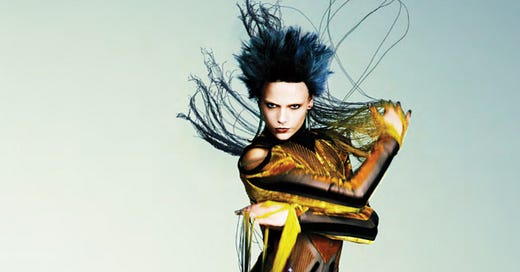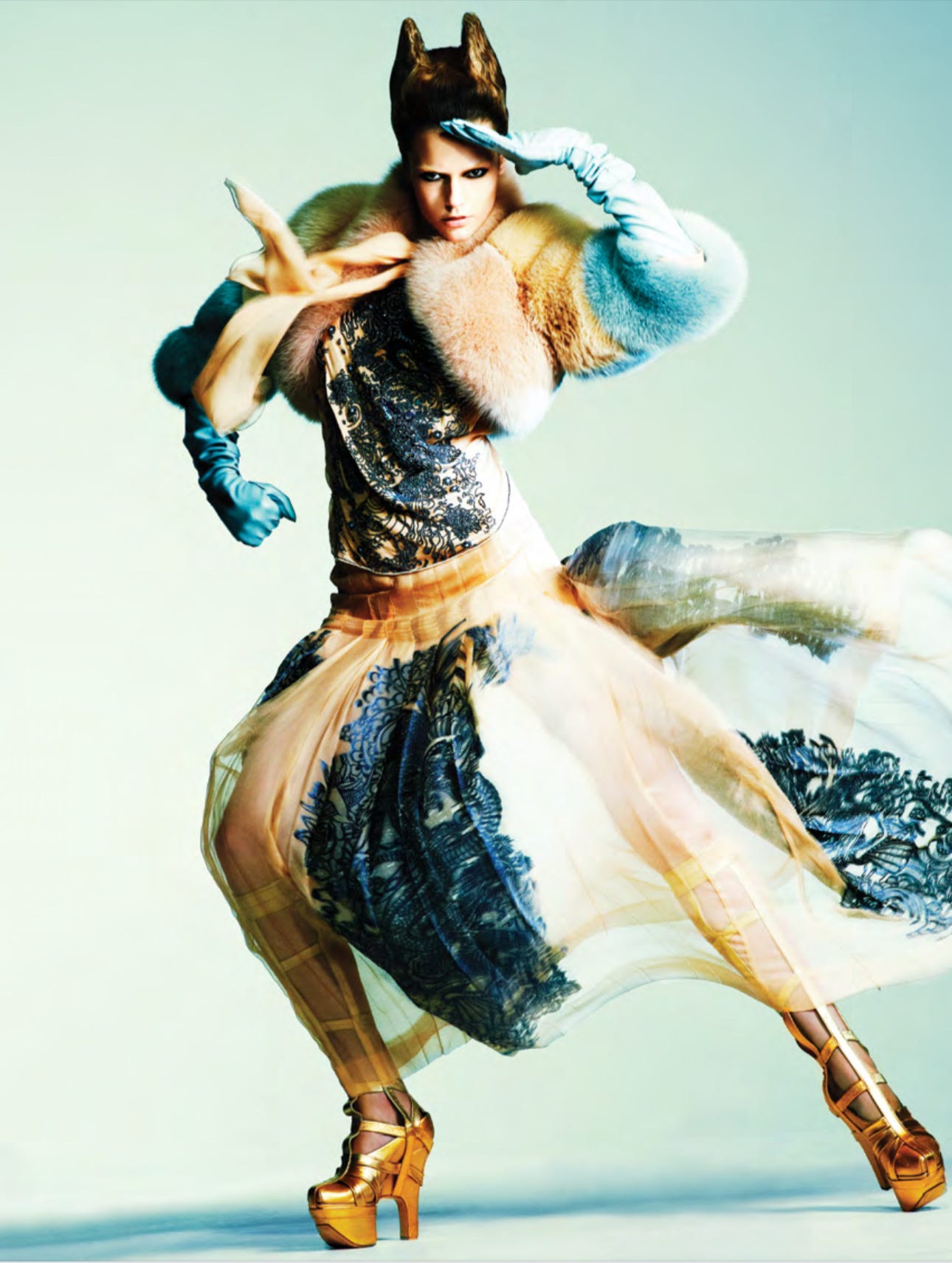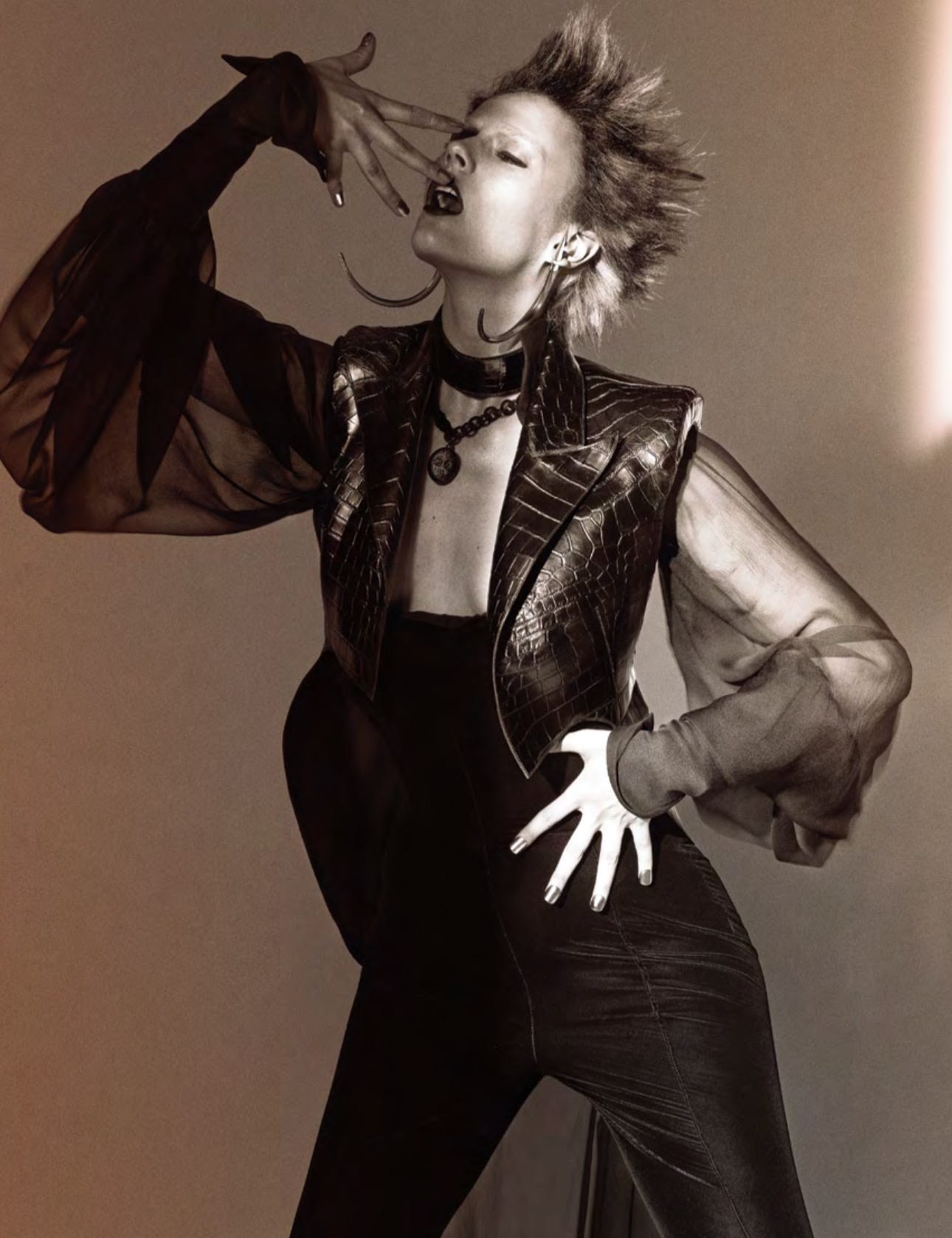Every child is asked at some point: What do you want to be when you grow up? I was five when my parents casually threw that question my way at the dinner table. I didn’t hesitate. I want to be like Jean Paul Gaultier.
Of course, life had other plans. Lacking the talent for drawing, I ended up with a knack for words instead. But Gaultier never left my mind.
Jean Paul Gaultier, born in 1952 in a quiet Parisian suburb, was introduced to couture by his grandmother—a pivotal moment that would ignite a lifelong obsession. He has since earned a reputation as fashion’s enfant terrible, though, as he tells it, his childhood was far from rebellious.
"Enfant terrible? No, not at all. I was a very wise but lonely child. I did not like to go to school, I preferred to stay at home and watch the clouds through my window, dreaming..."
It was through those dreams that his vision took shape. His earliest inspiration came not from glossy magazines or fashion shows, but from an old black-and-white film he watched with his grandmother, Falbalas by Jacques Becker.
"When I was ten years old, I saw it on television—the story of a fashion designer who falls in love with his best friend’s fiancée and commits suicide at the end... I did not, of course, want the tragic end, but there was a fashion show in the film. When I saw it, I immediately knew: this is what I want to do. Presenting fashion shows."
At twelve, he filled a brown school notebook with sketches—his first collection, in a way. His grandmother and magazines taught him the language of couture long before editors would hail him as its master. His high school experience was brief, cut short by an unwavering determination to follow his passion.
His path was direct: he sent sketches to Pierre Cardin, who hired him. He moved to Jacques Esterel, then back to Cardin, before launching his first real collection in 1976. By the 1980s, Gaultier wasn’t just part of fashion—he was fashion. A disruptor. A provocateur. A man who understood that the power of clothing went beyond fabric and stitches; it could challenge norms, shift culture, redefine gender.
"I never wanted to provoke, I just wanted to show what I found just for the present time... The skirt for men came at a time when manners were changing and men could more easily show their feminine side."
If Gaultier was a firestarter, Madonna was the explosion. Together, they created one of fashion’s most unforgettable collaborations—a union of couture and pop that sent shockwaves through the world. When Madonna took the stage in his conical corset during the Blond Ambition Tour, it wasn’t just an outfit; it was a statement. A challenge. A middle finger to the conventions of femininity, sexuality, and power. It was Madonna as a weapon, and Gaultier as the armorer.
Even now, decades later, their creative chemistry remains unmatched.
"Madonna is a permanent inspiration and it’s always a pleasure to meet and work with her. I think she’s great—I saw her concert, which was amazing."
But for every enduring partnership, there are others that fade. His years at Hermès, where he brought his avant-garde vision to the house’s storied heritage, remain a point of pride.
"I have great memories; it’s a love story that lasted seven years. I wanted to see what a boy coming from the suburbs could do with the ‘Faubourg,’ and I think it was a pretty good success."
Despite his larger-than-life influence, Gaultier remains admirably humble about his place in the creative world.
"I do not see myself as an artist but as a craftsman... I do not think fashion is art."
Yet, his work—its impact on fashion, gender politics, and cultural aesthetics—tells a different story.
Three decades into his career, he has seen everything change, from design techniques to the industry itself.
"There have been many transformations throughout my career, but I feel that the greatest came with large groups."
But through it all, his process remains the same:
"Anything can inspire me—traveling, books, cinema, theater..."
Fashion was never enough to contain him. He has dabbled in music (How to Do That?, anyone?), film, books, even Coca-Cola bottles. And yet, he still wonders what’s next.
"Yes, but I surely do not know what else."
He is, however, certain of one thing—at some point, he will stop.
"I hope one day I’ll stop, but I do not know when..."
Which means that, until that day comes, the world still has time to bask in the genius of Jean Paul Gaultier. And maybe—just maybe—my five-year-old self will get the ultimate gift:
"Sure Eric, we’ll see."
Perhaps one day, a piece from a Gaultier collection will bear my name. And if that isn’t destiny, then what is?
Photographer: Taka Mayumi
Stylist: Sohei Yoshida
Hair: Teiji
Make Up: Fusako Okuno
Model: Martha Streck
This interview was originally published by TWELV magazine’s second issue, 2012.






